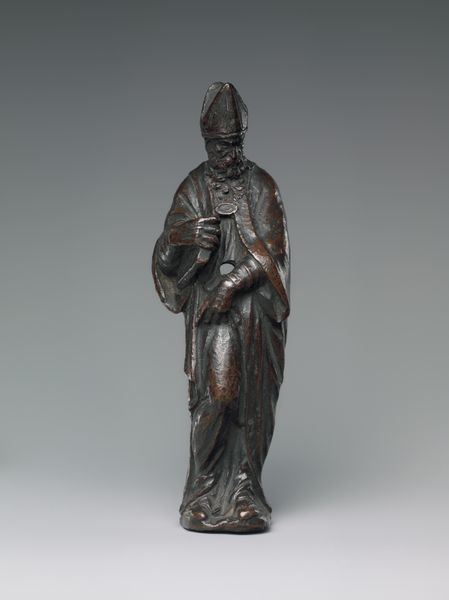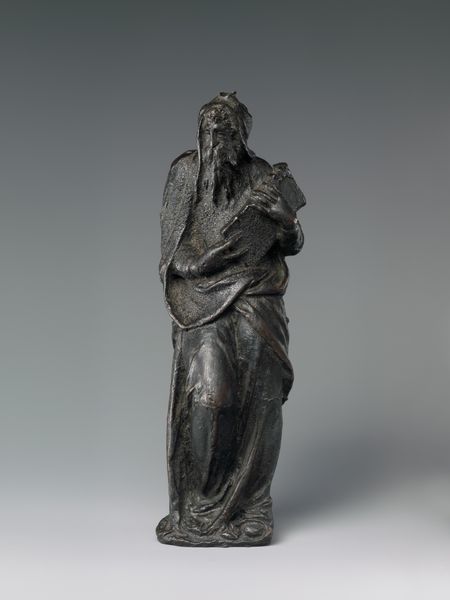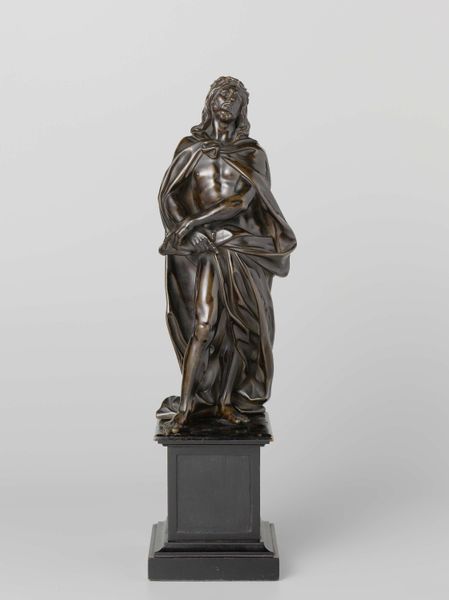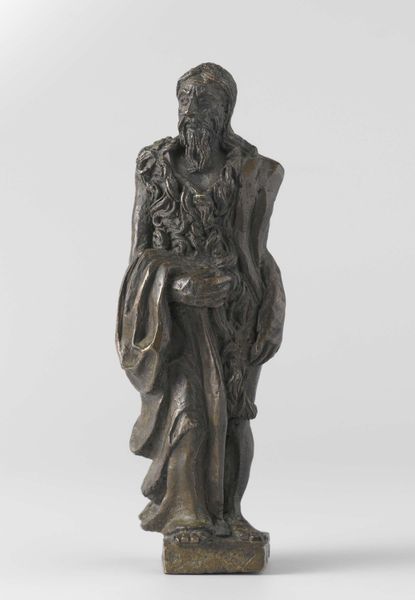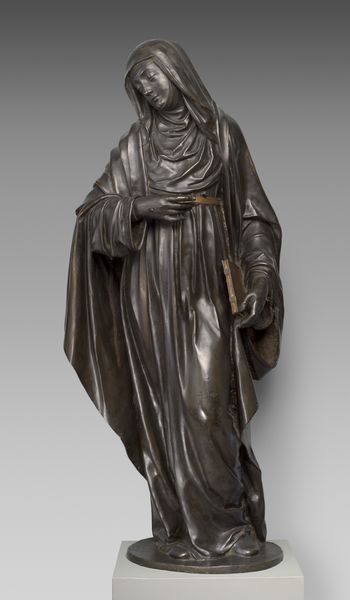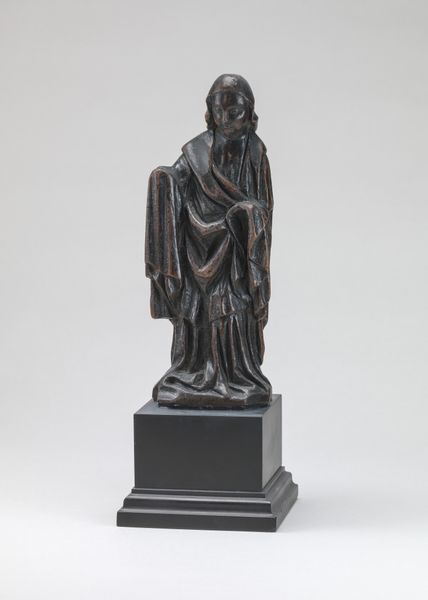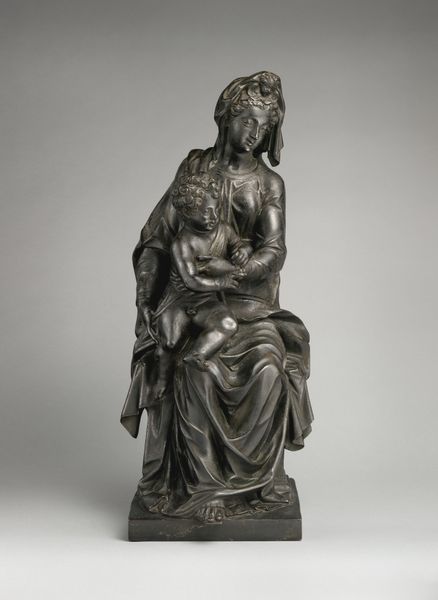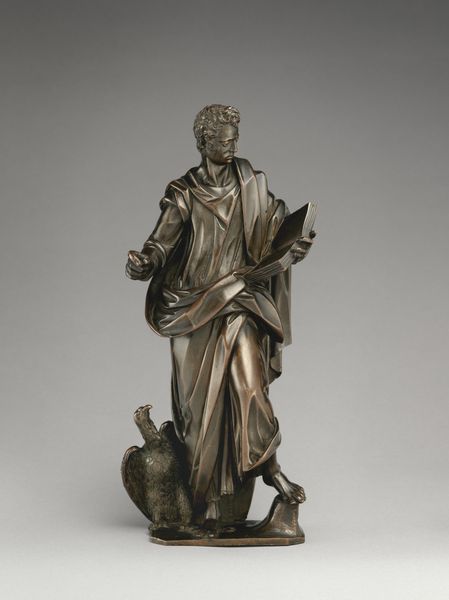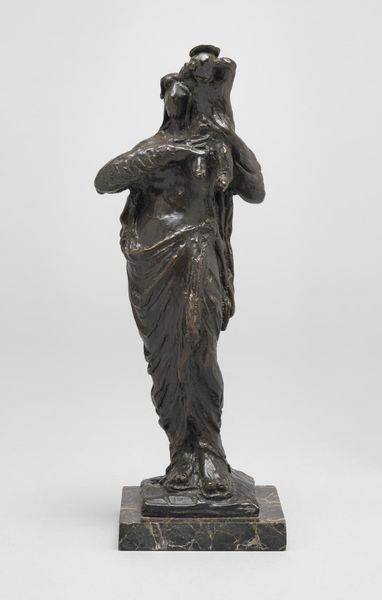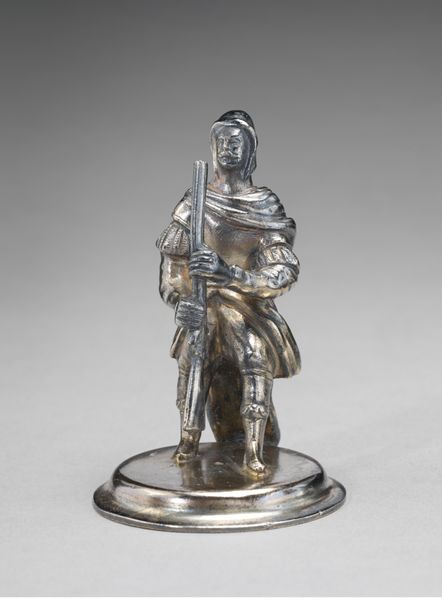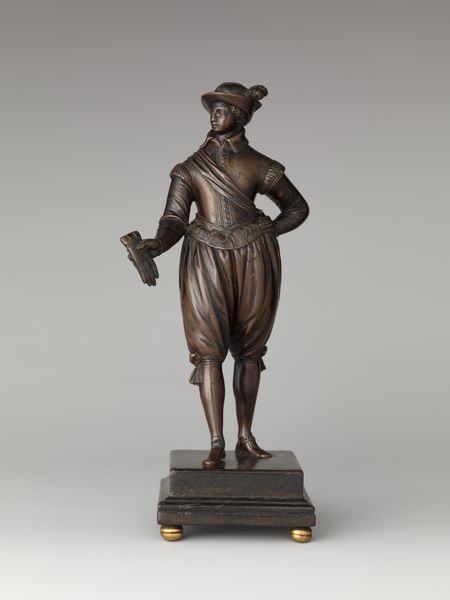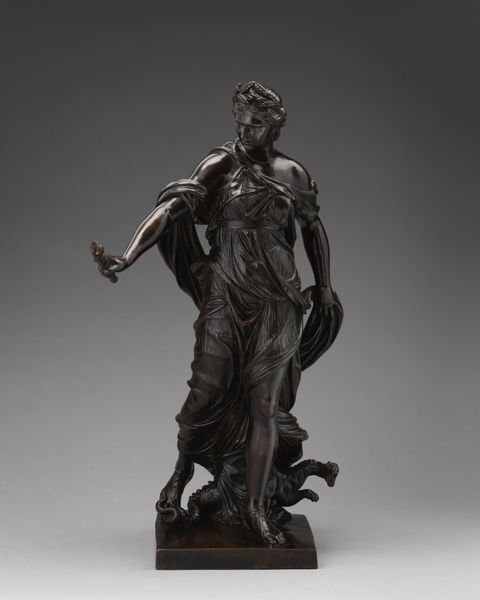
bronze, sculpture
#
portrait
#
sculpture
#
bronze
#
mannerism
#
figuration
#
sculpture
#
decorative-art
Dimensions: Overall (confirmed): 6 1/2 × 2 × 1 5/8 in. (16.5 × 5.1 × 4.1 cm)
Copyright: Public Domain
Curator: This bronze sculpture, tentatively titled "Bishop (Saint Augustine?)," was created by Jacopo Sansovino between 1550 and 1600. It resides here at the Metropolitan Museum. Editor: Whoa, the texture just jumps out! Look at how the light catches all those folds in his robe, and that beard… It makes you want to reach out and touch it, to feel the age in the bronze, you know? Curator: It’s remarkable. Sansovino, steeped in the Mannerist style, was navigating the changing socio-political landscape of 16th-century Italy. The portrayal of religious figures wasn’t just about devotional art; it was also about power, influence, and negotiating complex relationships with the Church. Editor: Right, and I guess the question mark after Saint Augustine points to that whole uncertainty, too? Like, “Here’s a holy man…maybe. We’re not entirely sure, and maybe that’s the point.” It leaves the door open for interpretation, right? Curator: Precisely. Was this an intentional ambiguity, reflecting a period of theological questioning, or a comment on institutional authority? We have to ask these questions about identity in the context of artistic patronage. Editor: I get it. You look at that little book he’s holding… maybe that represents doctrine, maybe knowledge… or maybe just another symbol of authority. Curator: These carefully rendered attributes contribute to our understanding, offering entry points to discussing art patronage, shifting class relations, the Reformation. What does it mean to depict a bishop in this specific way during that era? Editor: I keep coming back to how grounded he feels despite being a small statue. His stance, the folds of his garments creating that sense of weight… It’s heavy stuff, metaphorically and probably physically! Curator: That sense of weight and solemnity, I agree, is quite palpable. Editor: You know, considering the time, there’s this incredible intimacy in how the sculptor captured him. Makes me think about the artist's intent, their relationship with the Church, even their personal beliefs. It really does invite reflection. Curator: It’s a profound intersection of artistry, history, and identity. Editor: Exactly. Who knew a little bronze dude could hold so much?
Comments
No comments
Be the first to comment and join the conversation on the ultimate creative platform.
